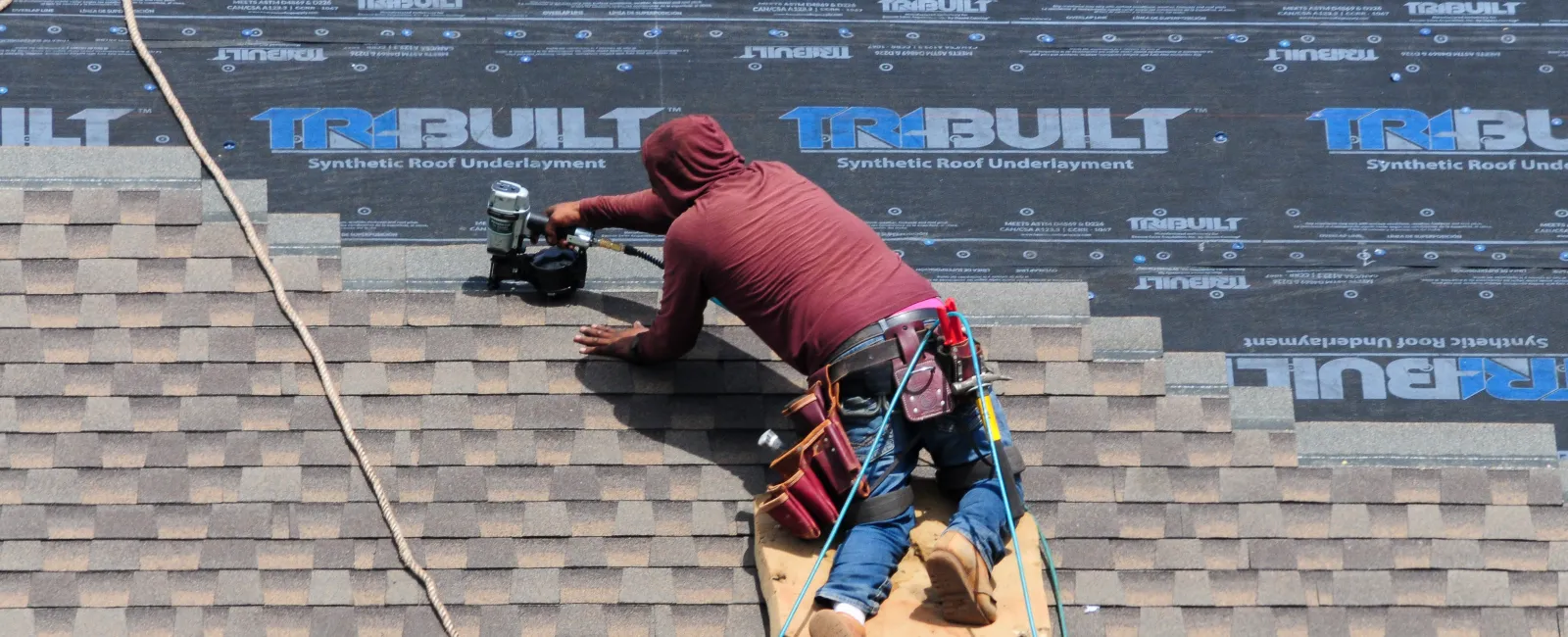While many homeowners pay attention to the top layer of the roof where the shingles reside, there is another, unseen layer just beneath, with a very important job: This is the roofing underlayment, and it protects your roof against moisture and heat damage.
What is an underlayment?
An underlayment is a barrier that is placed down on a roof before the top layer – such as shingles or tiles – is installed. It is placed, usually through adhesives, against the roof decking and provides an extra layer of protection. You see, while shingles and other top layer materials do a good job at protecting the roof from some elements, they struggle to prevent certain problems with seeping moisture or heat buildup.
The underlayment, however, can deal with these more insidious problems. It keeps water away from the roof decking if any leaks beneath the top layer – especially leaks that carry chemical traces to and from shingles, which can be especially corrosive to the shingles and the decking alike. The underlayment also insulates the roof and attic spaces from heat. It can even add some sound insulation against falling rain and other noises.
There are two common choices when it comes to a roofing underlayment:
- Felt Paper: Felt paper is a sheet of paper, made from cellulose or fiberglass, that has been dipped in an asphalt mixture. Often there is a layer of adhesive on one side to help make installation easier.
- Synthetic Plastic Sheets: This plastic layer is a mixture of polymers and polypropylene. It tends to be better at resisting moisture than roofing felt, and weighs far less, which can make installation easier. It also provides protection against UV damage in sunny climates. However, quality may vary considerably between different styles and brands.
Matching the underlayment to your roof
So, how do you go about picking out a roofing underlayment? There are several different factors at play, but one of the most imporant is what type of top layer your roof uses. With traditional shingles, roofing felt is often a good idea – 15-pound roofing felt in particular provides adequate protection while still giving air some room to move around. However, if you have a metal roof them you may want to use a synthetic layer with more heat resistance, because metal roofing may trap heat more easily than other materials.
Climate is also an important factor. Hotter climates or very wet areas may be more conducive to synthetic underlayments, but if you live in location that receives frequent snow and windstorms, heavy-duty felt may be preferable.
Other considerations
If you are concerned about price, roofing felt tends to be more affordable than synthetic underlayments, although this can vary based on both material and labor. Ask a roofing professional what materials work best in your area, and what options can help you save the most!



